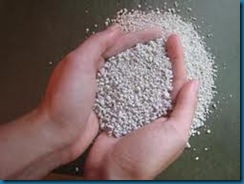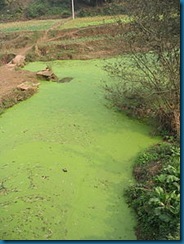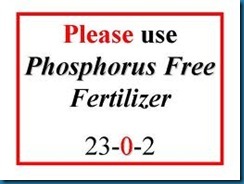The Inorganic Element to Organic Gardening
This final article in the series Organic Fertilizers is focusing on the minerals that soils and plants need. Mineral are inorganic, and the process for their use is different from other organic fertilizers.
Microorganisms will devour the minerals and then, their waste and enzymes they produce make the nutrients available at the roots of plants

Plants need 17 elements for a balanced diet. Most chemical fertilizers have the three main element of Nitrogen, Phosphorous, and Potassium. However, the other 14 listed above – are usually not available to the soil from these products. If even one element is missing, the garden plants may survive, but they do not thrive.
Think of these 14 elements as part of a construction site. The N-P-K is the major structure – the trusses, the floor joists, and the wall studs. The remaining macronutrients, and micronutrients are the nails, and screws that hold the structure together.
 Ok, so one screw gets omitted. Most likely the structure won’t fall down. But if 3 – 4 screws are left out, the structure can get wobbly. And lets face it, if even 10% of the screws are not installed, the whole thing can collapse. Likewise, the balance of the nutrients available to the plants is critical. If even one element is missing the plant suffers.
Ok, so one screw gets omitted. Most likely the structure won’t fall down. But if 3 – 4 screws are left out, the structure can get wobbly. And lets face it, if even 10% of the screws are not installed, the whole thing can collapse. Likewise, the balance of the nutrients available to the plants is critical. If even one element is missing the plant suffers. As I always remind my readers, have a soil analysis
Now, having said all that, here are some mineral products that may be useful in the garden and landscape.
Rock Dust, also called rock powder or stone meal, has an interesting story. An 18th century grist miller named Julius Hensel, noticed, one day that rocks accidently made it into his product. He removed the contaminated product to a back portion of the property. Soon he realized that this forgotten part of the garden was lush and growing better than other parts. Over the next years, Hensel documented the crops growth and even spread this rock dust around fruit trees that were wormy. The trees started to product full, fleshy fruit and the community all wanted this Rock Dust for their crops. The Bread from Stones
Rock Dust
 |
| http://prorev.com/dust.htm |
Epsom Salts
.
Gypsum

www.usagypsum.com
Gypsum
Greensand
Rock Phosphate

This is algal bloom. Many Ohio waters are being affected by this excessive growth and it is reducing oxygen levels to the point that fish die-off is apparent. Grand Lake in St. Mary’s Ohio, as well as Lake Erie are victims of this problem. As homeowners and farmers apply fertilizers, it is the phosphorous that is the cause. Since phosphorous does not move through the soil readily, it is the fertilizers themselves that are pouring into the streams and lakes. The algae is difficult to control, and agencies and communities are pouring funds into projects that may or may not succeed trying to control the algae bloom.
As with anything, mineral supplements can greatly enhance crops and yields. While indiscriminate usage can cause major problems in the soil and in the watershed. Some fertilizer manufacturers are creating products that have no phosphorous due to community restrictions.
 |
| www.farmteam.org/ |
The soil analysis
Thanks for following this series on organic fertilizers. If you have any questions, please ask in the comments form.
1 comment:
We are a group of volunteers and opening a new scheme in our community. Your web site provided us with valuable information to work on. You’ve done a formidable job and our whole community will be grateful to you.
Post a Comment